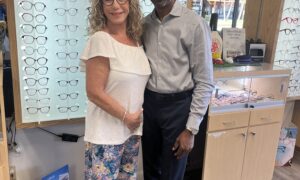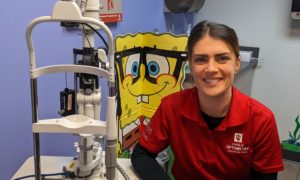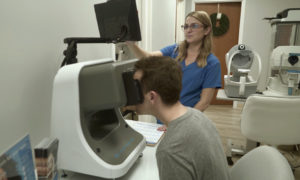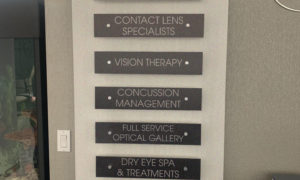Classrooms around the country are becoming increasingly high-tech, and teachers are incorporating 3D imaging, digital devices and the latest computer applications into their daily curriculum. These devices can greatly enhance learning, but they also increase the importance of proper eye and vision care.
According to the American Optometric Association’s (AOA) 2011 American Eye-Q survey, parents have some concern about the effects of the evolving technology. Fifty-three percent of respondents with children 18 or younger believe 3D viewing is harmful to a child’s vision or eyes and 29 percent of parents feel very concerned that their child may damage their eyes due to prolonged use of computers or hand-held electronic devices.
Today’s classroom technology is extremely visual, making it critical for students to maintain excellent eye health,” says James Sheedy, O.D., Ph.D., an AOA technology and vision expert. “Binocular vision, focusing abilities as well as nearsightedness and farsightedness should be checked by an eye doctor yearly, particularly as students head back to school.”
Three-dimensional imaging is a technology that is quickly making its way into the classroom, allowing for virtual tours of museums or views from inside the human heart. But not everyone can see in 3D and some children experience problems. Ten percent of survey respondents report their child experienced headaches; seven percent indicated nausea and six percent said their kids felt dizzy after using 3D technology. Furthermore, the AOA estimates anywhere from three to nine million people have problems with binocular vision, prohibiting them from viewing 3D images.
“Quite simply, people who have even a small vision misalignment or those who don’t have equal vision in both eyes may not be able to see 3D images properly,” says Dr. Sheedy. “Watching images in 3D can unmask issues such as lazy eye, convergence insufficiency, poor focusing skills and other visual problems students might not have previously known existed.”
Undetected visual problems that affect the ability to see in 3D can also have an impact on students’ future careers. The 3D@Home Consortium, in partnership with the AOA, has developed a list of professions where 3D vision, tools and design are, or will be, used frequently to complete tasks or projects. The list includes professions ranging from astronomers to surgeons, engineers to forensic scientists.
According to a new report from the AOA, research on the learning benefits of using 3D in the classroom is still in its infancy, but early findings indicate that focus, attention span, retention, classroom behavior, and achievement gains are all seeing improvement. The report, “3D in the Classroom – An AOA Report” was developed in collaboration with educators, vision researchers and specialist advisors from across the 3D industry. It’s designed for teachers, students and parents and explains the optimal uses of 3D in the classroom.
The use of 3D imagery in schools compounds the already high usage of computer technology in today’s classroom. State-of-the-art computer labs are now mainstream at many schools; students often use laptops, tablets and other digital devices throughout the school day. According to the AOA’s American Eye-Q survey, 62 percent of parents estimate their child spends one to four hours using a computer, video game, mp3 player or hand-held electronic device each day.
Unfortunately, prolonged use of these technologies can cause eye strain, headaches, fatigue, burning or tired eyes, loss of focus, blurred vision, double vision or head and neck pain. The AOA calls this condition computer vision syndrome (CVS). CVS occurs when eye or vision problems related to near work are experienced during or related to using digital devices.
“The continued popularity and use of computers and digital devices in the classroom certainly poses a number of challenges to the visual system,” says Dr. Sheedy. “Many of these issues can be solved with good ergonomics and yearly, comprehensive eye exams by an optometrist.”
Students can help avoid CVS by practicing the 20-20-20 rule. At least every 20 minutes, take a 20-second break and view something 20 feet away. Studies show that people need to rest their eyes to keep them moist. Plus, staring off into the distance helps the eyes from locking into a close-up position. The AOA further recommends that students take a 15-minute break for every two hours spent on computers or other digital devices.
Early detection and treatment are key in correcting vision problems and helping students see clearly. For more information on 3D vision, or to download a copy of “3D in the Classroom – An AOA Report,” visit www.3deyehealth.org. To find an optometrist in your area, or for additional information on children’s vision and the importance of back-to-school eye exams, please visit www.aoa.org.





















